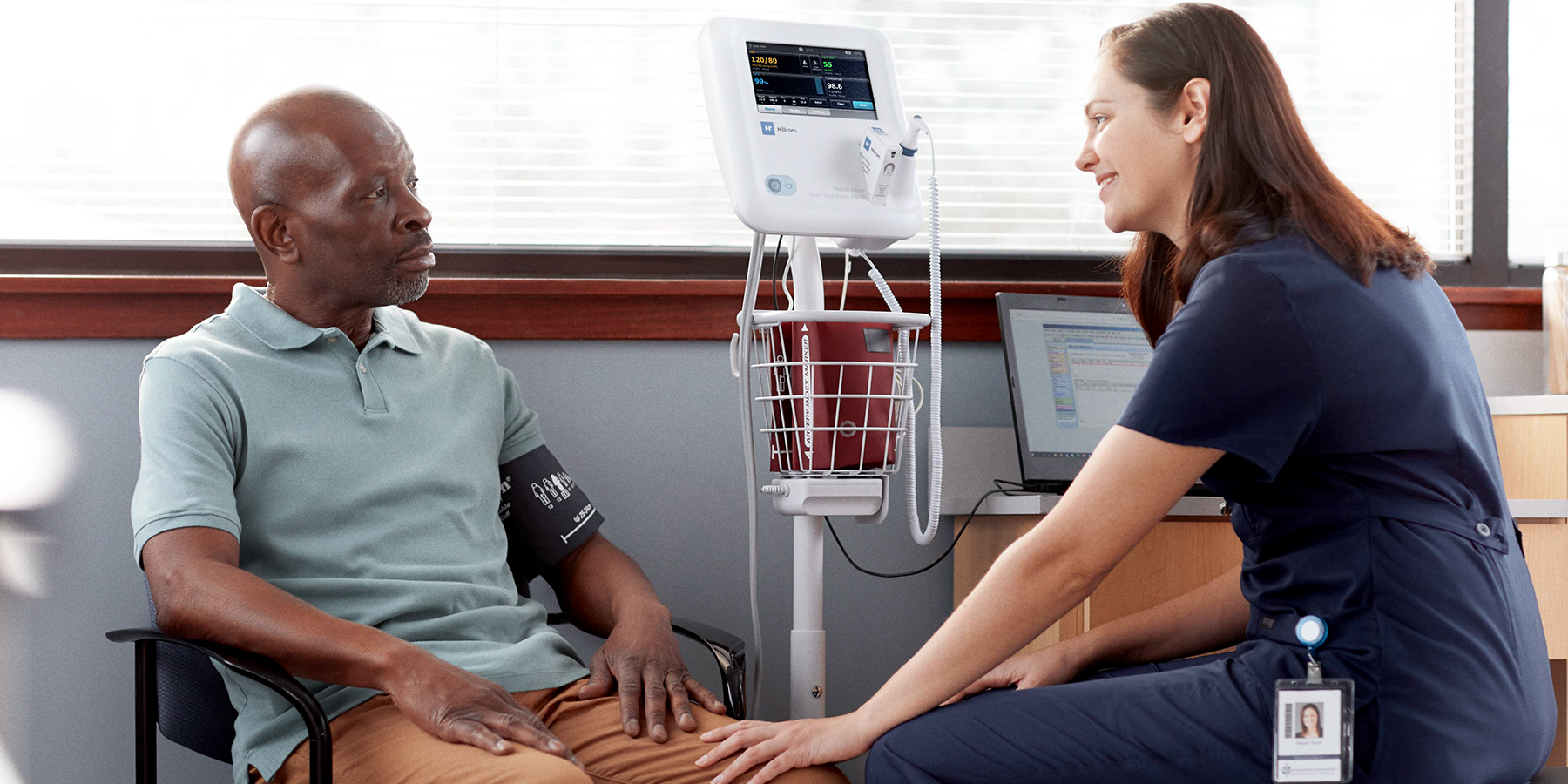17 JUN 2021
5 Minutes
https://assets.hillrom.com/is/image/hillrom/author-photo-1-1?$knowledgeDesktop$&fmt=png-alpha
A misdiagnosis that leads to unnecessary treatment or the absence of necessary treatment is a mistake no clinician wants to make. Unfortunately, it happens — particularly when it comes to discerning an elevated blood pressure (BP) reading from true hypertension (HTN).
Data suggests that when the initial BP measurement was in the Stage 1 hypertension range, repeating the BP measurement resulted in reclassification to a non-hypertensive BP 35% of the time.1 It’s easy to see how many individuals diagnosed with hypertension might be normotensive, and others with true hypertension may be left undiagnosed.2
When we think about misdiagnoses, we tend to immediately look at the clinical impact and outcome for your patient — unnecessary medications, etc. But is that the only adverse effect we should consider? There are economic implications associated with unnecessary treatment of hypertension as well,3 for not only your patient, but the whole healthcare system.
The Cost of Misdiagnosis: For the Healthcare System
First, there is a high burden on the U.S. healthcare system and substantial societal costs to consider. The annual incremental cost of hypertension for U.S. adults in 2018 was $131 billion, and the healthcare utilization and economic burden attributable to hypertension in the U.S. continues to climb.4
The Cost of Misdiagnosis: For Your Patients
Let’s also talk about the financial burden of an incorrect diagnosis on your patient. Compared to the U.S. population without hypertension, persons with hypertension face nearly $2,000 higher annual healthcare expenditures.4 Patients diagnosed with hypertension incur almost twice the outpatient cost and nearly three times the prescription medication expenditures of their normotensive peers.4 There are also insurance implications for these individuals, as any documentation of hypertension can result in a down-graded status or rating, leading to higher life insurance premiums.5
The Cost of Misdiagnosis: For Your Practice
Finally, a misdiagnosis may also directly impact your practice’s bottom line. The International Classification of Disease (ICD) is a standard diagnostic tool for monitoring the incidence and prevalence of diseases and related conditions. Accurate coding enhances shared savings for your practice through arrangements including accountable care organizations (ACOs), bundled payments and value-based purchasing agreements.6
ICD-10 coding includes codes for elevated BP not diagnosed as hypertensive, nine primary hypertensive codes and five secondary hypertensive codes.7 Ensuring accurate ICD-10 coding is essential for accurate risk adjustment under the Hierarchical Condition Categories (HCCs) used by the Centers for Medicare and Medicaid Services (CMS) to estimate future spending.5 There is also heightened attention to CPT coding with the recent changes related to evaluation and management of patients effective January 1, 2021.8
HCC coding was designed to more accurately portray patients’ conditions and costs to adjust capitations to medical assistance plans. It is also used to calculate expenditure benchmarks for Medicare Shared Savings Program Accountable Care Organizations (MSSP ACOs). The CMS-HCC model focuses on chronic health conditions likely to affect long-term health expenditures and, therefore, purposefully excludes non-diagnostic, insignificant or definitively treated diagnoses.6
Because HCC risk scores heavily influence the benchmark calculations for the capitation rates for Medicare Advantage plans, they will have an impact on the bottom line for clinics. HCC scores also play a role in estimating financial liability for insurers who offer health insurance products on the federal health exchange. The failure to accurately code a patient’s risk may lead to inaccurately assigned low levels of attributed risk and reduced reimbursement for a facility.6
The bottom line? A hypertension misdiagnosis can have an adverse economic impact on your patients, your facility and the U.S. health system. It’s important to confirm true BP and code patients appropriately.
One way to do this is to limit reliance on a single BP reading to guide diagnostic and treatment decisions. A significant proportion of patients with office BP levels indicating hypertension show normotensive levels upon repeat measurement.1 And in 2019, the AHA issued new recommendations for automated office blood pressure (AOBP) solutions compared to traditional auscultatory blood pressure readings. Automated solutions are now the preferred approach for evaluating office BP.9
Devices capable of taking multiple readings without an observer present can further improve accuracy and reduce the error associated with auscultatory measurement according to the AHA.9 Learn more about BP averaging and why it’s important at hillrom.com/spot4400.
A hypertension misdiagnosis can impact your patients, your facility and the U.S. health system. For the health and safety of patients, and the financial health of our institutions, we can’t afford to get it wrong.


